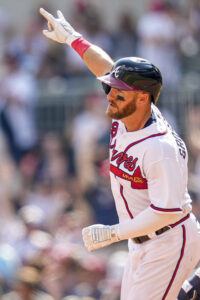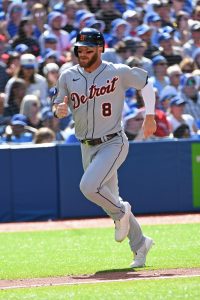When the Rangers signed veteran switch-hitter Robbie Grossman early in spring training, it looked like a sensible enough fit. Grossman has a lengthy track record of hitting left-handed pitching well, and the Rangers had multiple lefty-swinging options who could form a platoon with Grossman (e.g. Josh Smith, Brad Miller). However, manager Bruce Bochy said yesterday that Grossman isn’t likely to be platooned but rather to head into the season in line for the lion’s share of playing time in left field (link via Evan Grant of the Dallas Morning News). The Rangers like the adjustments Grossman has made from the left side of the dish and will give him a chance to play more often than not.
The decision to give Grossman regular playing time — or at least something close to it — is to his benefit in multiple ways. Beyond giving him a larger workload as he showcases for a return to free agency next winter, Grossman’s one-year, $2MM deal also comes with up to $3MM worth of incentives. Those are based on plate appearances, MLBTR has learned. He’ll receive a $250K bonus for reaching 250 and 300 plate appearances, and he’d receive $500K for hitting each of 350, 400, 450, 500 and 550 plate appearances. Most of those milestones would’ve been out of reach in a platoon role, but if he can take the everyday role and run with it, he can more than double his base salary.
Grossman has had an absolutely monstrous showing at the plate thus far in camp. The 33-year-old is hitting .406/.512/.656 with a pair of doubles, a pair of homers and more walks (eight) than strikeouts (four) through his first 41 plate appearances. Obviously, spring stats are best taken with a grain of salt, but it’s hard to imagine Grossman doing much more to with the opportunity he’s received in Texas. He’s even gone 3-for-3 in stolen-base attempts despite not typically being a huge threat to run during the regular season (his 20-steal 2021 campaign standing as the lone exception of note).
Grossman is looking for a rebound campaign after seeing his production dip to a tepid .209/.310/.311 slash in 477 plate appearances between Detroit and Atlanta last year. His ability — or lack thereof — to produce from the left side of the plate will be pivotal. Even as he struggled last year, Grossman hit .320/.436/.443 as a right-handed hitter. Producing against lefties has rarely been a problem for him, but he’s just a .232/.335/.363 career hitter against right-handed pitching. Grossman draws plenty of walks regardless of which side of the plate he’s standing on, but the .196/.308/.331 slash he’s logged in 783 plate appearances versus righties over the past two seasons won’t cut it in a regular role.
Defensively, Grossman has developed from a liability early in his career to an average or better left fielder. Back in 2016 with the Twins, he was dinged for an eye-popping -20 Defensive Runs Saved and -11 Outs Above Average in just 635 innings. Over the past four seasons, however, he’s been a scratch defender in the eyes of DRS. Both Ultimate Zone Rating (1.3) and OAA (2) feel he’s been a bit above average over that span of 2422 innings. Grossman probably won’t win a Gold Glove, but he’s become a capable option.
If the plan to give Grossman the bulk of the playing time in left doesn’t pan out, the options beyond him are more limited. Both Smith and Miller could get a look, though each is coming off a down season in 2022. Smith has yet to establish himself in the Majors despite being a former prospect of note. Fleet-footed Bubba Thompson figures to be the team’s fourth outfielder because of his speed, but he bats from the right side of the dish (Grossman’s stronger side). With Leody Taveras potentially beginning the season on the injured list, Thompson could open the season in center field. Non-roster veteran Travis Jankowski offers a similar speed-and-defense-driven skill set from the left side of the plate. If that in-house slat of options doesn’t work out, it wouldn’t be all that surprising to see the Rangers in the market for some outfield help on the summer trade market.

